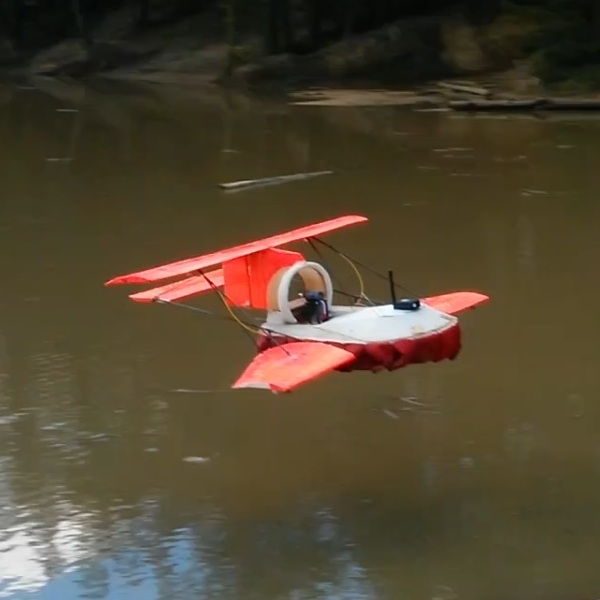HOVERSOAR HOVERWING GROUND EFFECT VEHICLE
The closest traditional form of “contactless transport” is the hovercraft. A hovercraft sits on a cushion of pressurised air contained by a flexible skirt — but this design comes with limitations. A hovercraft cannot:
- Operate on porous ground, such as shingle
- Travel in fields with crops, such as wheat or barley
- Traverse sudden level changes, such as from a mud flat to a water channel
-
Exceed the speed where aerodynamic lift outweighs the hull’s weight — otherwise the craft risks lifting at the front and flipping onto its side
By adding correctly designed aerofoils and control surfaces, these limitations can be overcome.
GROUND EFFECT
Aerofoils must generate enough lift to raise the hull clear of the surface, but not into free flight. In free flight, roughly two-thirds of lift comes from negative pressure above the wings, and one-third from positive pressure below. However, when wings are close to the ground or water, additional positive pressure builds beneath them — the result of air being compressed between wing and surface. This is known as ground effect.
SCALE MODEL TESTS
Before moving to full scale, we built a 1/6th scale model (pictured, with videos available on YouTube). This allows us to test different wing plans and aerofoil sections in a rapid-build, low-risk environment.
Current trials use computer-generated aerofoils designed to shift positive-pressure ground effect lift toward the front and negative-pressure free-flight lift toward the back. The result: improved pitch self-correction and more stable ground effect operation, with reduced risk of accidental free flight.
FULL-SCALE CRAFT DEVELOPMENT
The full-scale platform is based on a BHC Marlin II hull, powered by a Rolls Royce/BMW T312 APU gas turbine from a Tornado fighter jet. This engine drives a variable-pitch fan and was selected for its exceptional power-to-weight ratio and smooth output — unlike piston engines, it avoids pulsations that can stress driven components.
CURRENT SPECIFICATIONS (SUBJECT TO REFINEMENT)
- Length: ~5.4m (may increase slightly)
- Wingspan: ~5.6m (may decrease slightly)
- Engine power: 140 – 150HP
- Control Surfaces: Rudder, elevator and ailerons
- Stabilisation: On-board pitch and roll sensor linked to control surfaces
- Design speed: ~100 km/h (~62 mph)
- Design cruise height: 1 – 3m

APPLICATIONS INCLUDE:
- Lake, Loch and Fjord Transport
- Surveying
- Mud-Flat and Tidal Zone Search and Rescue
- Archipelago Transport
- Flood Search, Rescue and Emergency Resource Provision
- Leisure and Recreation
